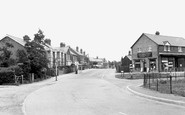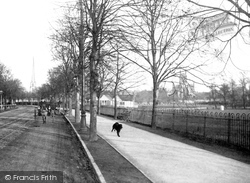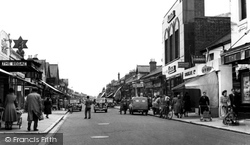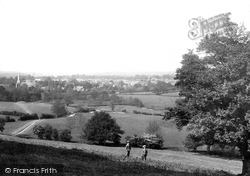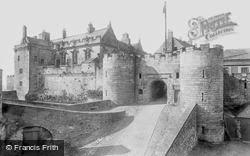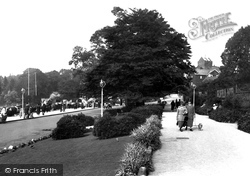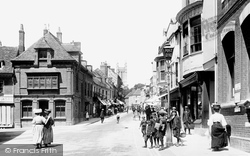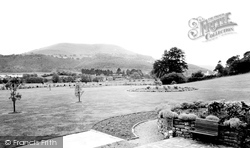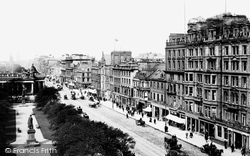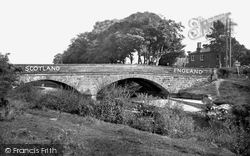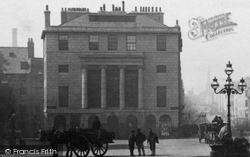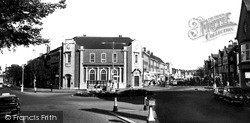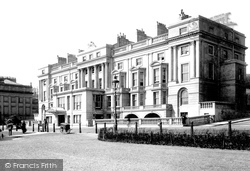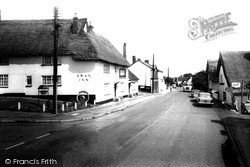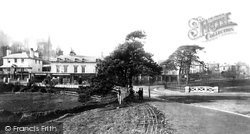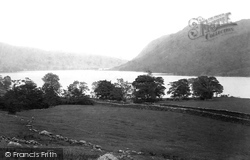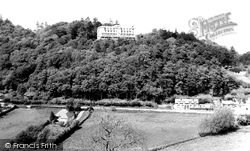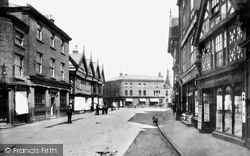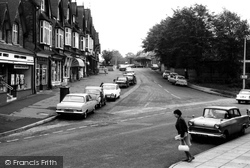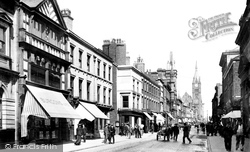Places
8 places found.
Those places high-lighted have photos. All locations may have maps, books and memories.
Photos
80 photos found. Showing results 261 to 80.
Maps
49 maps found.
Books
Sorry, no books were found that related to your search.
Memories
1,421 memories found. Showing results 131 to 140.
Where I Was Born
My Beginning, at Sole Street near Cobham Kent. (9th March 1946 - 2nd January 1951) I was born on Saturday March 9th 1946 at 3.29pm at Temperley, The Street, Sole Street, Kent. I was delivered at home by the ...Read more
A memory of Sole Street in 1946
Air Raids
These memories are as fresh in my mind as if they happened last week. Boston had its share of air raids, the first one was on a rainy Monday, it was July, the first day of our summer school holidays. It would be about 7.15 am when we heard a ...Read more
A memory of Boston in 1940 by
George Appleton
My great uncle lived with his family at 46 Park Browad in Landewednack. The family history suggests he and his family lived around here until a move to the Lizard. He was a doctor and 2 of his sons followed his profession and also ...Read more
A memory of Lizard in 1880 by
The Brook
Wonderful memories! It was awonderful place to have grown up. I learned to swim in the brook, aged about 11 years. I wonder who wrote the following which I was taught in school. Very appropriate! "Little stream flowing ...Read more
A memory of Gayton by
46 Bridge Road, Cove
46 Bridge Road at Cove is very significant to me because I was born in Bridge Road, no 46, on 29th June 1943, in the photo of Bridge Road it is the second house on the left, opposite Cove Supply Stores, so I'm sure my mother would ...Read more
A memory of Cove in 1943 by
Fynn From The Black Dog
I'm also related to Mr William Fynn ( of sorts!) who ran the Black Dog. He passed away in 1912 after an unsuccessful operation. His wife Rosanna born in Lancashire was of Scottish heritage. Grace was her niece ...Read more
A memory of Horndon on the Hill by
Warners
As a young child I can remember several holidays taken at the Warners holiday camp at Seaton. The serious business of 'motoring down to Devon' was never taken lightly, lunch was prepared the night before to be eaten at Stonehenge, where one ...Read more
A memory of Seaton in 1965 by
Local History Project About Collyhurst Volunteers Needed!!
Dear all, I've just been reading all of your posts about Collyhurst and am astounded at how vivid your memories of the area are! It really is fantastic to see. From working ...Read more
A memory of Newton by
Bramley In The Years 1935 To 1941
Now 80 years of age I used to live with my Mum and Dad and brother Michael in Lincroft Crescent just above the Sandford estate. The houses were new and rather small though we were so happy there ...Read more
A memory of Bramley in 1930 by
Triggered A Few More Memories
Waterloo in the 1940s to 1950s My early memories are of Waterloo where I used to live at Winchester Avenue until 1958. My father died there in 1989. On College Road there were air raid shelters which me and ...Read more
A memory of Waterloo by
Captions
877 captions found. Showing results 313 to 336.
An early traveller from Worcester bound for the Westside would first cross the bridge, then follow a causeway across flood meadows before trudging up narrow, winding Cripplegate to St John's.
Originally a village, Eastleigh expanded rapidly around Bishopstoke Junction after the London and South Western Railway Company's carriage works moved here in 1889-90, followed by the locomotive workshops
Following the Norman Conquest, it was given to William de Braose, and in 1617 it became a corporate borough with a common seal and elected bailiffs.
One of Scotland's greatest royal fortresses, Stirling Castle was taken by William Wallace in 1297 but was surrendered to Edward I in August 1305 following a siege.
The provision of the public gardens of the Promenade at Bowness also followed the coming of the railway in 1847, and the increased popularity of the Lake District as a health-giving holiday resort for
The village grew from about the 14th century as people migrated into Weardale following the discovery of iron ore and further veins of lead.
Poore's Victorian brewery office became Handel House around 1920, with a wide altered shop-front sellling pianos, followed soon after by A B Scott's shoe shop.
The landscaping of these gardens was only completed in 1964, following the pur- chase of Linda Vista House and gardens by the council in 1960.
Next on the list were the Caledonian, the Station and the Royal, followed by the somewhat cheaper Royal British, the Douglas and the Bedford.
Gretna stands on the Scottish/English border, and so it became popular for runaway marriages of English couples following the passage of Lord Hardwicke's act in 1754.
The path through the park was supposed to follow the route of a Roman road.
Following a fire in 1973, this was rebuilt as two conventional storeys. The front to Union Street is dramatically austere, in the Aberdonian manner.
Following a two-year building programme, the £670,000 National Sports Centre opened in 1971 on a site near the Pavilion - the culmination of a ten-year effort to create a central home for
The Georgian style can be seen following along the left side of Leys Avenue and on Station Road at Lloyd's Bank (left).
It was opened on 28 October 1829 with a dinner for over 200 people followed by a grand display of fireworks.
Following the closure of the post office and stores in March 2003, a community shop and post office opened in the barn of the Swan in December 2003.The single-decker bus is approaching another now
Other wealthy gentlemen followed his example, but it was to be the middle of that century before the town achieved popularity as a holiday resort.
Not many years later, following the Haweswater Act of 1919, Manchester Corporation would be given the right to acquire the lake and its surrounding catchment area for a major reservoir.
It was in Victorian times that Stretton became popular with visitors, following the building of the railway line.
For instance, the timber building on the right was built the following year.
In return for granting permission to the GWR to build the line across his land, local landowner George Frederick Muntz demanded the provision of a station: houses and shops inevitably followed.
However, it no longer stands, having been demolished following a fire in 1947.
Other wealthy gentlemen followed his example, but it was to be towards the middle of that century before the town achieved popularity as a holiday resort.
Christchurch Castle, of which only the ruins remain, was probably built by Richard de Redvers, a cousin of Henry I, who was given the royal manor as a reward for aiding Henry in his fight for the crown following
Places (8)
Photos (80)
Memories (1421)
Books (0)
Maps (49)



